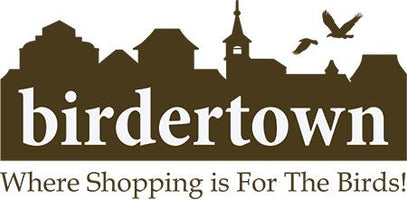
7 Winter Bird Feeding Tips
You may not have thought about it, but those of us who keep birdfeeders are playing an important role within the avian community. This is particularly the case during winter when feeders can occupy a more central role as a food source when other sources are scarce. With this in mind, here are seven winter feeding tips for bountiful cold weather birdwatching.
-
Provide High Energy Foods
Birds want to refuel as quickly as possible. This is particularly the case in the winter as many birds will look for food in the morning. Things like pieces of peanuts or sunflower seeds are good choices. Suet is also an excellent choice for winter birds and something you should strive to have out all winter as it helps provide an energy boost while also allowing birds to build fat stores. -
Consider Adding Plants
Getting birds to your backyard during winter isn’t solely done by providing feeders. If you would like, you can also increase your odds by growing specific plants. You’ll ideally want to plant things that produce berries or seeds during the winter. Some of the best choices for this are crab apple trees, winterberry, holly, Virginia creeper, and hackberry. This will make your backyard an eater’s paradise. -
Provide Water as Well as Food
While many people tend to focus on food sources when it comes to feeding birds for the cold season, an important winter feeding tip involves providing a water source too. In cold climates, traditional sources will become inaccessible as they freeze. Thus, having a birdbath with a feature that moves the water will preserve it for birds who visit your yard. Additionally, the noise from water features will attract species on the look for water. -
Variety is Still King
While there are definitely things (i.e., suet) that are best to offer during the winter, the reality is that variety is still king. Most of us want to attract a variety of species of birds. This can be accomplished by providing a variety of types of foods and placing feeders as different heights (as different types of birds prefer eating at different heights). Ultimately, the more variety you provide, the more likely you are to have a diverse array of visitors. -
Fruit is Very Popular for Many Winter Birds
You are certainly forgiven if you don’t associate fruit with winter. After all, many fruits are the tidings of spring and summer. However, there are many species of bird that love fruit, making it a big hit even through the winter months. A good tip is to find whatever is one sale at your local market. Apples, grapes, cherries, and oranges all make good choices for attracting different species of birds. Cutting larger fruits into smaller portions can make them more attractive and easier to eat as well. -
Be Consistent with Refilling Feeders
A particularly important winter-feeding tip is to consistently refill bird feeders. In the summer, birds that find their favorite food source bare can more easily find another. In the winter, this becomes much more difficult, particularly in difficult climates such as a snowstorm. Having your feeders reliably stocked can be critical to a bird’s survival if they’ve adopted your home as a favored source of nutrients. Having a variety of feeders or even larger feeders can help particularly if you can’t get out to refill for a major snow. -
Keep Your Feeders Clean
Winter weather means that there are less worries about feeders developing major problems that are common in warmer months such as mold or fungus. However, that doesn’t mean that you can go the whole season without cleaning them. It is a good practice to clean your feeders a few times during the winter, particularly if you end up being a favorite locale for lots of local birds to dine. Most feeders can easily be cleaned with hot water and dried before being put back into place.
At Birdertown, we love all things bird! Be sure to check back for more important advice and tips for how to have success birdwatching all year long. If you find yourself needing to stock up on birdseed for the winter, be sure to keep us in mind.
